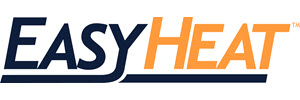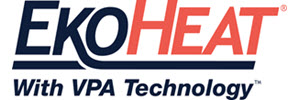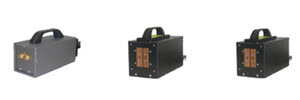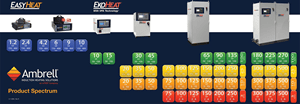Fusion par Induction
- D’accueil
- Tous les Processus
- Fusion
La fusion des métaux par induction s’effectue généralement en chauffant le métal dans un creuset fabriqué à partir d’un matériau réfractaire non conducteur. La masse de métal placée dans le creuset est fondue jusqu’à atteindre sa forme liquide. Ce procédé est couramment employé pour produire des aciers et alliages non ferreux de haute qualité destinés à des opérations de moulage.
Note de fusion populaire
Vidéo de fusion populaire
Nos systèmes et équipements de fusion
Chauffage par induction
Il est une méthode rapide, efficace, précise et répétable, sans contact permettant de chauffer les métaux ou les autres matériaux conducteurs d'électricité. Le matériau peut être un métal comme de l'acier, du cuivre, de l'aluminium, du laiton ou cela peut être un semi-conducteur comme du carbone, du graphite ou du carbure de silicium. Pour chauffer les matériaux non conducteurs comme le plastique ou le verre, l'induction est utilisée pour chauffer un suscepteur conducteur d'électricité, habituellement le graphite, qui transfère ensuite la chaleur du matériau non conducteur.
Lisez notre brochure de quatre pages "À propos du chauffage par induction"
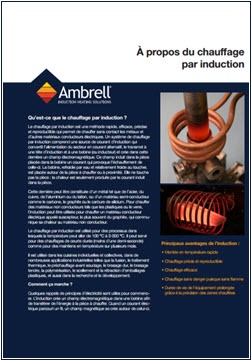
Bobines d'Induction
La bobine d’induction, ou inducteur, est le composant du système de chauffage par induction qui détermine l’efficacité et le rendement du chauffage de la pièce.
La bobine sert à transférer l’énergie de l’alimentation en puissance et de la tête d’induction à la pièce, en créant un champ électromagnétique alternatif.
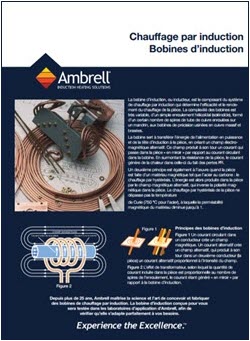
AMBRELL CORPORATION
1655 Lyell Avenue
Rochester, NY 14606
United States
![]() Directions
Directions
T: +1 585 889 9000
F: +1 585 889 4030
Contacter le Service Commercial
Contacter le Service des Commandes
Contacter le Service
AMBRELL B.V.
Holtersweg 1
7556 BS Hengelo
The Netherlands
![]() Instructions
Instructions
T: +31 880 150 100
F: +31 546 788 154
Contacter le Service Commercial
Contacter le Service des Commandes
Contacter le Service
AMBRELL Ltd.
Front Suite, 1st Floor, Charles House
148-149 Gt Charles Street
Birmingham, B3 3HT
United Kingdom
T: +44 1242 514042
F: +31 546 788 154
Contacter le Service Commercial
Contacter le Service des Commandes
Contacter le Service

